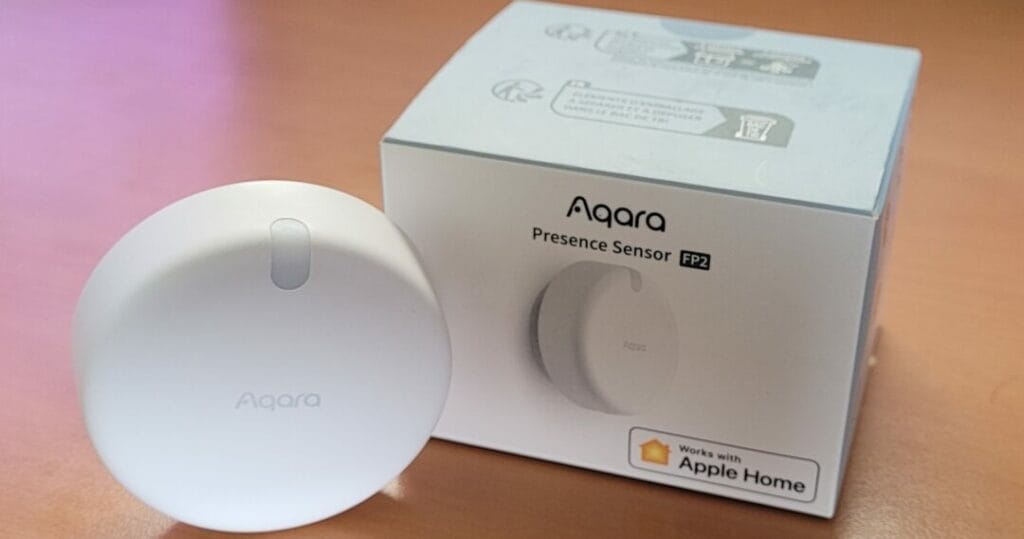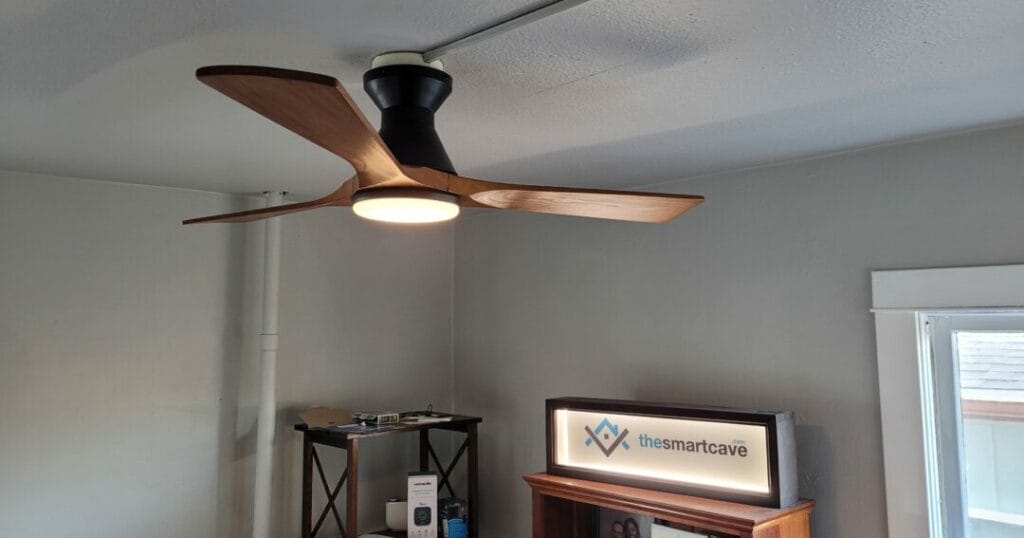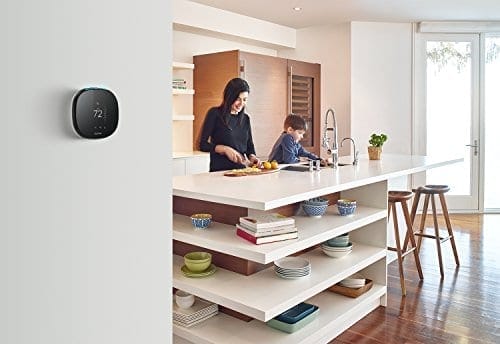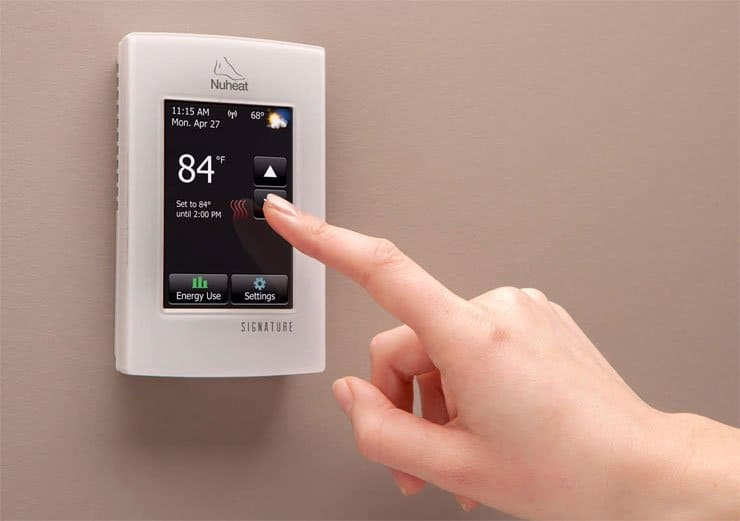For years, human presence detection for home automation has been really hard to do well, and almost impossible to do perfectly. However, human presence sensors powered by mmWave radar are threatening to change that.
In the past, motion detection was done almost exclusively with the standard PIR motion detectors. They work great IF you’re moving. But if you stop moving – fall asleep, read a book, watch television – they no longer detect your presence.
On the other hand, mmWave sensors can sense much more subtle movements, such as breathing. In addition, the newest models can detect distance, which direction you’re moving, and even number of people present.
Things To Know Before You Buy
Here is a list of important factors to consider to make sure you get a presence sensor that fits your needs. This includes specific features of products, and also general “things to know” about mmwave presence sensors.
Response Time
Lighting is the most common purpose for using these sensors. For that reason, it’s critical that the sensor responds very quickly to your presence. You want the lights to come on as fast (or faster) as you could reach the physical switch and flip on the light. The FP2 and EP1 are the “gold standard” for speed responding nearly instantly.
Eliminate false positives
There are generally two types of errors with presence detection:
- False positive – The sensor detects presence when it shouldn’t. This is a very common problem with mmWave sensors because they are so sensitive. Even the slightest bit of motion can set them off. For example, common sources of false positives with mmWave sensors include curtains, ceiling fans, and moving objects visible through windows.
- False negative – The sensor fails to detect presence when it should. This is common with PIR motion sensors, but only rarely a problem with mmWave.
The way to minimize false positives is to:
- adjust the mounting location and orientation
- configure range and sensitivity options (available on all sensors except for the Tuya PS-HPS)
- Use presence “zones” to ignore problem areas (available on Aqara FP1 and Apara FP2)
- Use interference detector to ignore problem areas (available on Aqara FP2)
Zones
Both the FP1 and FP2 break up the area that is “visible” to the sensor into a grid of squares. Each square can detect presence independent of the other squares. Using the app, you can choose a section of the grid to create a “zone”. Then, automations can be designed for each specific zone.
Activation States
Once the visible area is broken down into a grid of squares, it’s also possible to track an object moving through the sensor’s field of view. It can detect which direction an object is moving, how fast it’s moving, and how many objects there are.
The FP1 can detect direction, and the FP2 can detect how fast (fall detection) and how many (multi-person detection).
Power Source
Presence sensors powered by mmWave radar are constantly sending out pulses and processing the signal that gets bounced back to them. Because of this, they require way too much power to be battery powered. Therefore, they require a hard-wired connection. Typically this takes the form of power via USB. However, a couple models can also be wired directly to AC power.
Mounting Location
The sensors can be mounted on a wall or on the ceiling. The location and orientation of the sensor will have a significant impact on the effectiveness of your sensor. For most use cases, the best orientation will be on a wall. However, for models that have fall detection, you will need to mount the sensor on the ceiling to use that feature.
Configuration Options
In order to fine-tune your sensor’s operation for your space, it’s desirable to have the option to adjust the sensitivity and range of the sensor. Combined with adjusting the mounting location, this can be very helpful to eliminate sources of error (false positives and false negatives). All of the sensors on this list except for the Tuya PS-HPS have these options. This sort of fine-tuning is less necessary with a more powerful sensor like the FP2.
Smart Home Integration
All of the listed options are either ZigBee or WiFi. Using ZigBee with a locally controlled hub is the fastest and most reliable method for integrating your sensor. It eliminates any reliance on cloud applications. However, setting up a hub like that is not for the casual user. For the casual user, a WiFi sensor (like the FP2) with an app that handles all your integrations makes more sense.
Best mmWave Presence Sensors
Best Overall – Aqara FP2

When I first saw what the Aqara FP2 can do, I was completely blown away. It effectively addresses several problems that previous mmWave presence sensors have suffered from, and adds new features that will take your home automation capabilities to the next level.
The FP2 is capable of detecting presence nearly instantly. Speed was a major annoyance with previous mmWave models (except for the EP1). That problem appears to have gone away with the FP2.
It can scan for sources of motion that cause false positives (e.g. ceiling fan) and then ignore those sources in the future.
It has a 20 x 16 grid of detection zones. Within the app, you can use the zones to define walls, entrances, and exits. Furthermore, you can use the zones to break up your large rooms into smaller regions, each with their own automation rules.
The FP2 supports Apple HomeKit, alongside compatibility with Alexa and Google. It uses WiFi and requires the Aqara app for setup.
What I Like
- When you walk into the room, the lights come on FAST. It’s so fast that it may even be faster than manually flipping the switch. You could even set up the room boundaries to make the lights come on slightly **before** (mind blown!) you enter the room.
Before the FP2, one of the major drawbacks of all the popular mmWave sensor options was a noticeable delay for the initial detection of presence. Since the major use case for these sensors is lighting control, you really want the system to be super-responsive. It needs to be as fast or faster than your ability to effortlessly flip a switch as you walk into a room. In fact, one of the major reasons the EP1 (below) is so popular is that it incorporates a PIR for speed. The FP2 largely eliminates this annoyance and manages to perform well with only it’s mmWave sensor. - The FP2 can break up the view of the sensor area into zones. This allows you to use a single sensor in a large space. Furthermore, you can create customized automations when occupancy is detected in specific zones of that space. This is really cool and makes some over the top, unnecessary automations possible.
- In the past, false positives from ceiling fans, curtains, or even motion outside the home has been a thorn in the side of these mmWave sensors. Using the FP2’s “detect interference” feature, you can train the sensor to ignore the motion that is causing the false positives.
What I Don’t Like
- The FP2 uses WiFi and requires you to use the Aqara app to access all the advanced mapping capabilities. Therefore, you are married to the Aqara app and the associated cloud if you want to use it. However, a recent update has made it possible to work offline using the HomeKit integration.
- Pets will still trigger the presence sensor. This problem exists with all the sensors in this list, but I specifically listed it here because it is the only “human presence sensing” related issue that the FP2 has. It seems to have solved the other common problems. I don’t see an easy way around this.
Verdict
Aqara is light years ahead on this. At this point, there is nothing else like it (that I know of).
The EP1 performs as well in the speed category, but doesn’t have the zoning ability or the interference detection. The FP1 does have the zoning ability (at a lesser resolution), but lacks the speed and the interference detection of the FP2.
There are probably some hardcore automation people that will turn their nose up at the WiFi and cloud requirement. But for the vast majority of people, this presence sensor opens up a world of presence-based automation that was previously either extremely difficult, ineffective, or both.
Check Price | Aqara FP2 Presence Sensor
Best for Automation Geeks – Everything Presence One (EP1)
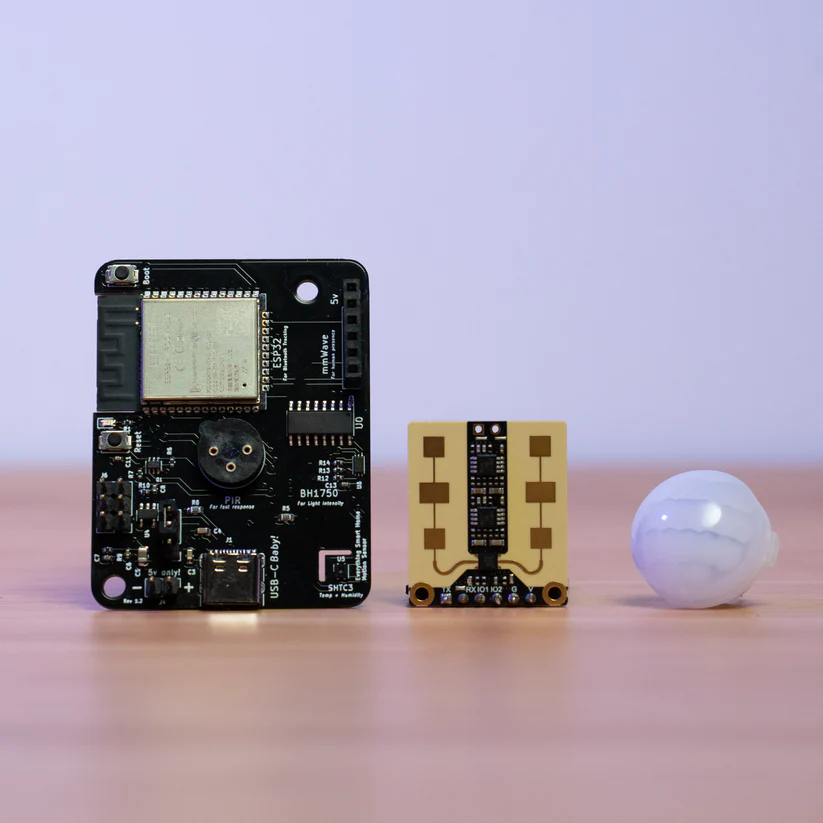
If you are already a Home Assistant user, you’ve probably already heard of the EP1. If you’re thinking of becoming a Home Assistant user, this is the device that should convince you to take the leap.
This all-in-one presence sensor was designed for home automation geeks by a home automation geek. It is packed full of sensors. It includes the following:
- mmWave sensor
- PIR sensor
- Temperature and humidity sensor
- Light sensor
- Bluetooth and WiFi module
However, the EP1 is not for the casual smart home user. There is no dedicated app to hold your hand through the setup process. In order to use the EP1 you’ll want to have a Home Assistant setup, and be familiar with ESPHome.
What I Like
- You can create advanced presence-based automations using only the sensors contained within this device. For example, turn on/off lights or HVAC based on people in the room, use the light sensor to determine whether lights need to be turned on and at what intensity, or integrate the Bluetooth tracker to identify who’s in the room so that you can create personalized automations.
- This device is completely local. At no time do you have to connect to an external cloud app or account.
- It’s customizable. Both the mmWave sensor and the PIR sensor are removable and therefore upgradeable. Also, it comes with ESPHome installed, but you can flash it with your own choice of firmware if that’s your thing. Finally, the board has 4 additional GPIO pins for customization.
- Since the mmWave sensor uses so much power that it requires a hard-wired source, it makes a lot of sense to pack a bunch of other sensors into it. This way, they can all be hidden in the same place and they can all share the same power source. Normally, you might have those 2 or 3 other sensors spread across the room and each would have their own battery that periodically needs replacing.
- By buying the EP1, you are supporting a small business and a creator that has done some really awesome things in the home automation community. This product started as a DIY project on Youtube. The project got so much positive feedback that the creator decided to turn it into a production model. The EverythingSmartHome Youtube channel is filled with detailed descriptions of how to accomplish unique and useful tasks in Home Assistant.
What I Don’t Like
- The EP1 uses a 24GHz mmWave sensor. This generally means it will be less able to detect very small movements compared to a 60GHz mmWave sensor.
Additionally, it increases the effective distance of the signal, and the ability of the signal to penetrate objects. That probably sounds like a good thing. However, too much distance and penetration can cause false positives if the signal starts picking up motion through walls.
Fortunately, if these potential issues are actually problem, you could always swap out the current mmWave sensor for one of your choosing. - It does not currently support region detection. The ability to define which regions can trigger an automation is extremely useful for eliminating false positives. For example, if the sensor keeps picking up curtains blowing from an air vent, you can eliminate that region from the trigger region.
Verdict
As you can see, there’s lot’s to like about the EP1. Its smorgasbord of sensors make it the swiss army knife of presence detection. It’s ability to automate using only the onboard sensors is unbeatable. However, it’s not really for the casual user that is used to downloading an app and syncing their device with Alexa. Rather, it’s much more for the power user as it requires a fair amount of know-how to get it working and to make the most use of all its features.
Check Price | Everthing Presence One – EP1
Coming Soon – Inovelli mmWave smart switch (Project Linus)
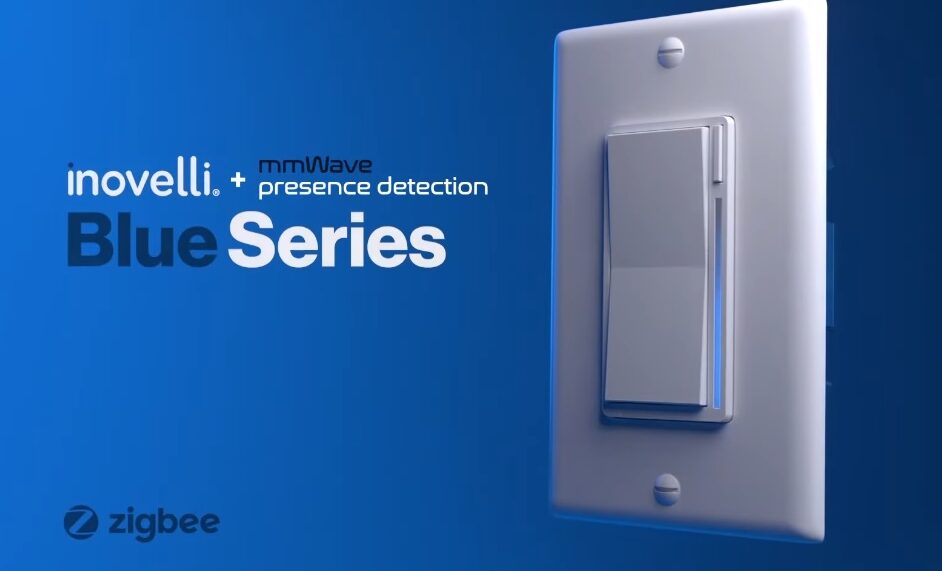
Inovelli is in the process of developing a mmWave sensor that is embedded within a smart switch. This concept isn’t entirely unfamiliar, as you have probably already seen light switches integrated with PIR motion sensors.
Inovelli’s approach of combining the sensor and the smart switch effectively solves two common problems:
- mmWave sensors use a lot of power and therefore require hard-wiring. Since the sensors are typically mounted in the middle of a wall somewhere, its difficult to get power to the sensor without running an unsightly wire up the wall. If the sensor is integrated into a switch, there is already a built-in power source.
- Another issue common to nearly all smart home sensors is figuring out a place to put them. With the sensor built into a switch box, it has a permanent place that is aesthetically accetable. An added bonus is that it can’t be tampered with, knocked off a shelf, or sucked into a vacuum.
The smart switch will include all the awesome features of Inovelli’s 2-1 smart switch plus the mmWave sensor. The addition of the mmWave sensor to the already rich feature set of the Inovelli 2-1 switch will make this presence sensing smart switch a home automation powerhouse.
This product is currently under development with a targeted release date of Dec 2023. Here are the discussion threads on Inovelli’s website: ZigBee | Z-Wave
Best Value – Tuya ZY-M100
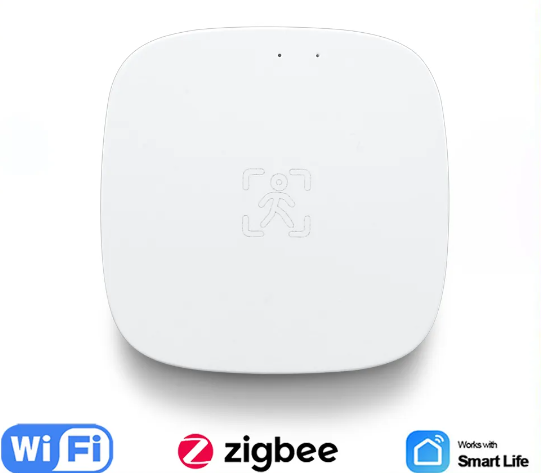
The Tuya ZY-M100 is a capable presence sensor at a low price.
It has options for configuring the sensor sensitivity and range, but lacks options for sensing events like the Aqara FP1. With proper configuration, the sensor will detect your presence when you enter the room within 1 second and sometimes even less.
It’s available as a wall-mounted version, which looks like a typical sensor, or as a ceiling-mounted version which looks similar to a recessed light. It’s also available with either ZigBee connectivity or WiFi.
You can find the same sensor being sold by many different brands (and sometimes unbranded). It’s easily recognizable by the goofy stick human icon printed on top of the sensor.
What I Like
- The ZY-M100 offers comparable performance and similar configuration options to the FP1 at slightly more than half the price.
- This sensor is available in both a ZigBee version and a WiFi version. The WiFi version requires the use of the Tuya cloud, which I prefer to stay away from. But, if you’re comfortable with it, you can use it and significantly simplify the setup and operation.
What I Don’t Like
- It doesn’t support the use of regions. This is a really powerful feature which is supported by both the Aqara FP1 and FP2
- It doesn’t support the “approach” event like the Aqara FP1.
Verdict
If I would’ve been able to get my hands on this device 2 years ago, I would’ve been thoroughly impressed. However, the mmWave presence sensors have advanced so quickly that the Tuya ZY-M100 is now the bargain option. It offers a reasonably fast response time, and enough customization options to fine-tune the sensor so that it operates effectively within your space.
It’s about 1/3 the price of the Aqara FP2 and is readily available on Aliexpress and occasionally on Amazon. If you shop around on Aliexpress, you can sometimes find them really cheap. At the time I published this, the store linked below had it listed at $15.54.
Alternative for Local Control – Aqara FP1
Aqara’s FP1 presence sensor has been a major part of all the buzz surrounding mmWave presence sensors in the home automation community. However, it’s only a year old and it’s already been replaced by the FP2.
As the predecessor to the FP2, it shares some of the same features, but they’re just not as nice.
The FP1 is the only other mmWave sensor that has detection zones (7 x 4 grid) built in.
Its binary sensor performs about the same (speed-wise) as the Tuya ZY-M100 and typically takes 0.5 – 1.0 sec (but sometimes several seconds)to detect presence. However, you can use the “approach” event to make it respond significantly faster (consistently < 0.5 sec).
The FP1 uses ZigBee for connectivity and is fully supported by popular ZigBee applications such as ZigBee2MQTT. It’s also compatible with HomeKit.
What I Like
- It has configuration options for motion sensitivity and for approach distance. These can be tinkered with to hopefully eliminate sources of false positives.
- Its 7 x 4 grid of detection zones can potentially be used to filter out more sources of false positives.
- The FP1 uses ZigBee and is fully supported (regions too! – here’s how to do it) by ZigBee2MQTT. Using this, you can configure and use the device completely locally.
What I Don’t Like
- There isn’t anything that really stands out to dislike about the FP1. Like I said above, it’s a capable sensor, but just not as powerful as the FP2. It’s slower and has less resolution.
Verdict
The FP1 was the best available mmWave presence sensor last year. But, it’s been passed up by both the FP2 and the EP1. It’s still a capable sensor, but at its current price point of about $50, it’s kind of in a “no man’s land” price range. Let me explain:
In my opinion, we are going to see a very fast evolution of these mmWave sensor products. For that reason, I would avoid buying a “middle of the road” product like the FP1 at this time. Instead, I would either:
- Save a little money by going with the cheaper ZY-M100 now, with the intent of upgrading to much more powerful sensor in the relatively near future.
- Spend a little more right now to get the FP2 which is way more powerful and capable and should be able to hold its own for at least a few years.
Since the FP2 is WiFi, the FP1 is an okay option for those of you that insist on using “local only” devices. But even in that case, I would lean towards saving a little money by going with the cheaper ZY-M100.
Obsolete – Tuya Human Presence Sensor (Tuya PS-HPS)
No products found.This human presence sensor can be found on Aliexpress and occasionally on Amazon. It’s frequently listed without a model name and is often just called Human Presence Sensor. However, it is easily recognizable by it’s comically large black case that makes it look like a gateway. It uses a 24 GHz mmWave module which can accurately sense presence up to 3m.
What I Like
- It does a good job of detecting presence. It’s just takes longer than the other options. For lighting applications, this is no good (see below). However, not all applications need to be as “fast-acting” as lighting. For example, it could work just fine for room to room temperature control.
What I Don’t Like
- It regularly takes anywhere from 1-5 seconds to detect presence. This is an unacceptably long time if you are going to use it to turn on lights when you walk into a room. I personally find it annoying if there’s even a half-second delay.
Therefore, if you want to use it for lighting, you would almost certainly want to install a PIR sensor (much faster) to trigger the initial “light on” automation. Then, rely on the mmWave sensor to keep the lights on until you leave. This 2-sensor system can work, but it adds complexity to the automation code, and the cost of another sensor. - You cannot adjust range or sensitivity. The default settings are what you get.
- It’s big. It’s basically double the length and double the width of the other sensors. No thanks.
Verdict
At this point, the sensor is essentially obsolete. The price difference between it and the other low-cost option (Tuya ZY-M100) is minimal. But, the performance and versatility is significantly weighted in favor of the ZY-M100. I see no reason to buy this sensor, but I will still leave a link to one so you know which one to avoid.
FAQs
Final Thoughts
After spending way too much time researching all these sensors, I find it difficult to recommend anything other than the Aqara FP2. In my opinion, the following two features alone make it better than the others:
- it’s ability to filter out false positive sources
- its lighting fast responsiveness
But that’s not all the FP2 brings to the table. Once you add in the high-resolution grid for room mapping, there’s really no comparison.
The only reason you might want to avoid the FP2 is because of its dependence on the Aqara app. If you are adamant about local control and really want to experiment with “regions”, the FP1 is your only option. However, I don’t think the FP1 is a very good value. When you compare it to the FP2, it’s simply under-powered. Given that fact, and how quickly I expect these devices to evolve, I don’t think it will take long for the FP1 to be obsolete. To me, if you insist on buying a presence sensor right now (and don’t want the FP2), I would rather “get by” with the ZY-M100 and plan on ditching it for something more like the FP2 when a local version becomes available.
That said, I have not yet outfitted my whole house with Aqara FP2’s. So far I’ve only bought one, and I’ve been having fun playing with it.
